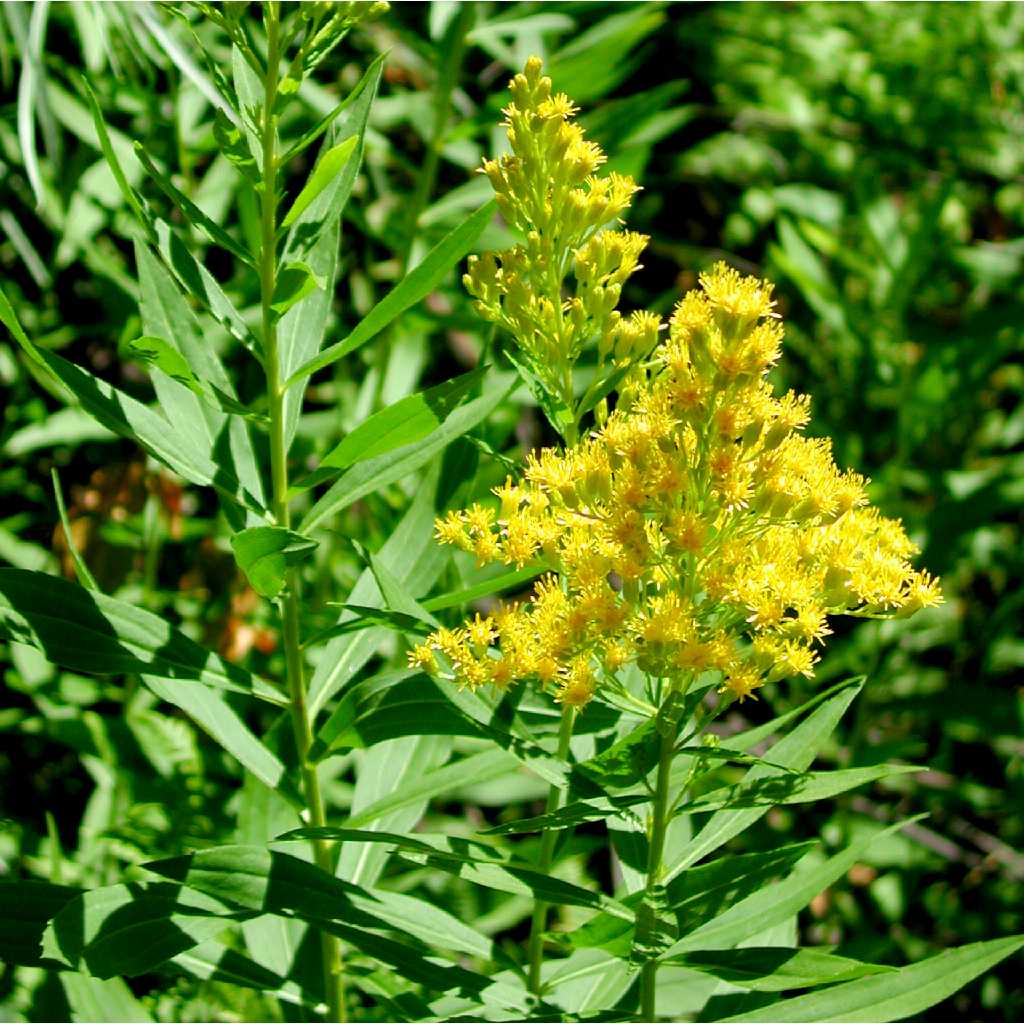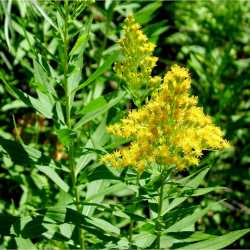Heads in pyramidal paniculiform arrays, proximal branches arching to recurved. 2n = 18, 36, 54.
Flowering Aug-Oct. Dry to moist sandy and gravelly soils, meadows, along streams and rivers; 0-2900+ m; Alta., B.C., Man., Sask.; Ariz., Colo., Idaho, Mont., Nev., N.Mex., Utah, Wash., Wyo.
Variety salebrosa strongly resembles Solidago canadensis, and is found throughout most of the Rocky Mountains in the United States and adjacent Canada. It has been included in S. canadensis by many authors (e.g., A. Cronquist 1994). In extreme forms the array is broader than tall with long, arching proximal branches. Hairier plants can be similar in appearance to S. altissima; the latter is usually not glandular and is much hairier. Glabrate plants of var. salebrosa can be difficult to distinguish from hexaploid S. gigantea near and in the mountains from Alberta south to New Mexico. Glabrate plants in the mountains often treated as S. gigantea are glandular and belong in S. lepida var. salebrosa. Small-headed diploids found in the Rocky Mountains from southern British Columbia to Colorado are usually sparsely glandular and could be confused with short-array forms of S. elongata.




